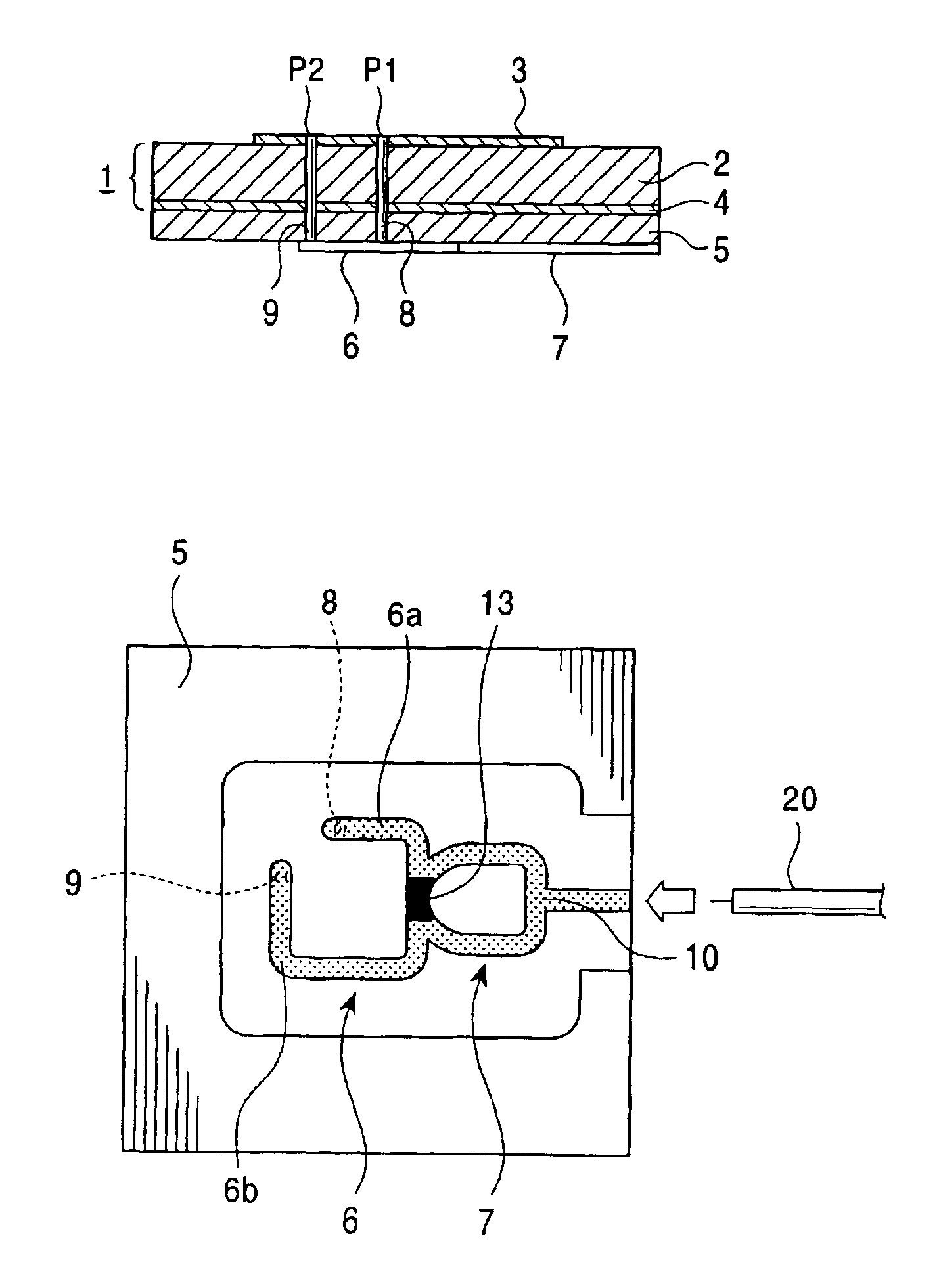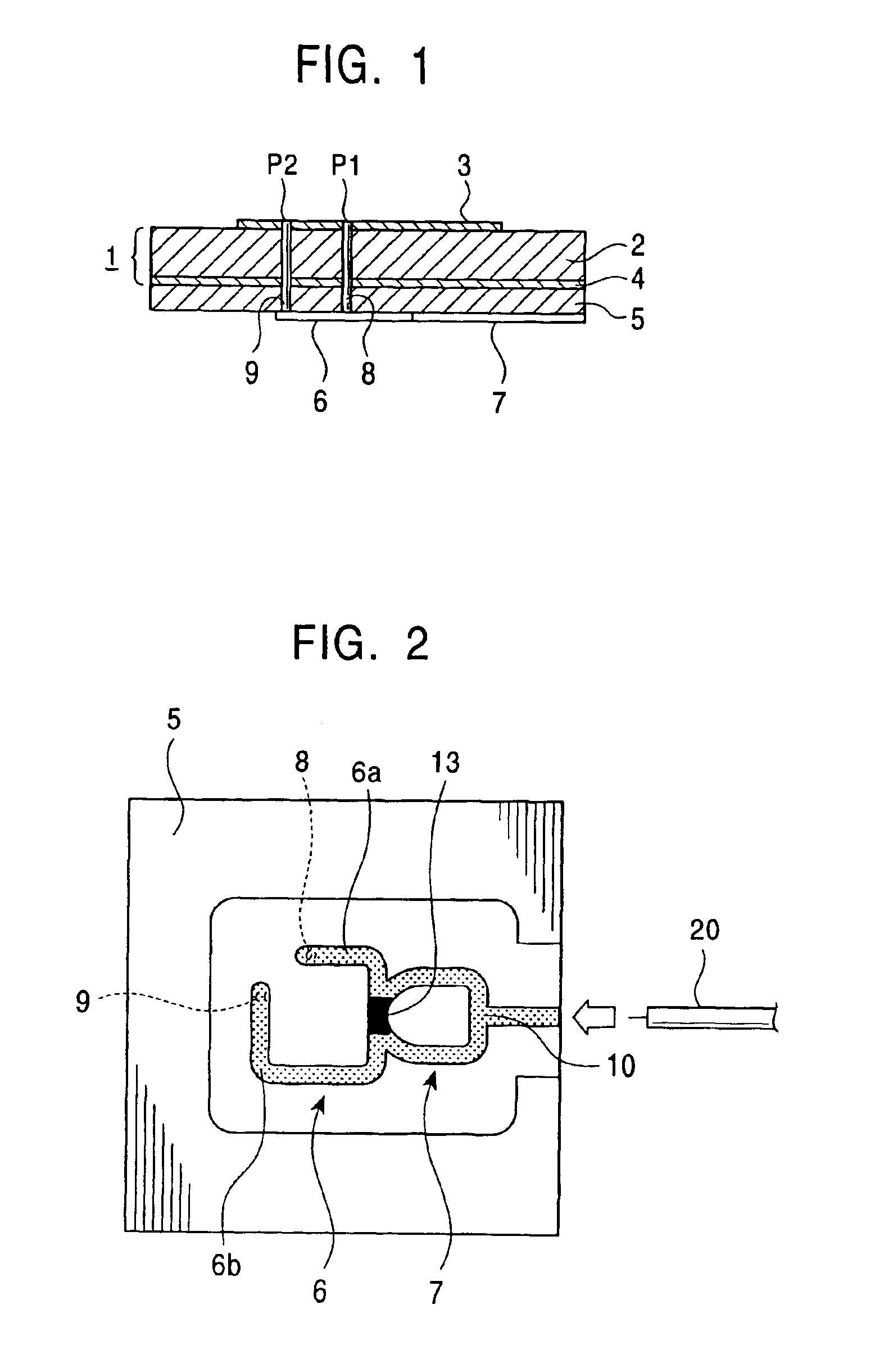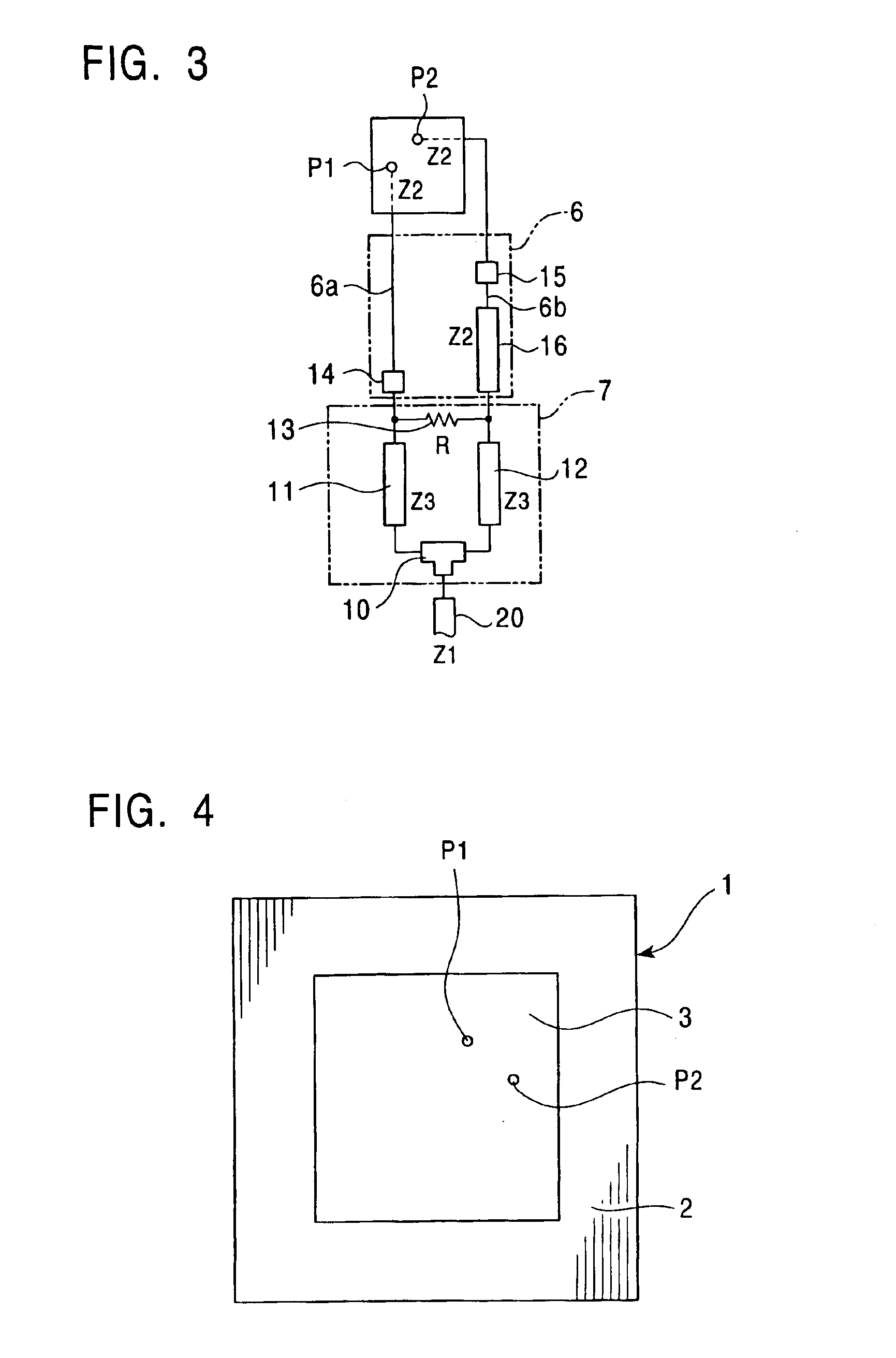Circularly-polarized-wave patch antenna which can be used in a wide frequency band
a patch antenna and circularly polarized wave technology, applied in the direction of waveguide devices, resonance antennas, coupling devices, etc., can solve the problems of difficult to ensure the isolation of a pair of transmission lines connected to the 90°-phase-difference circuit of the patch electrode, and difficulty in providing electric power
- Summary
- Abstract
- Description
- Claims
- Application Information
AI Technical Summary
Benefits of technology
Problems solved by technology
Method used
Image
Examples
Embodiment Construction
[0018]Hereinafter, an embodiment of the present invention will be described with reference to the above listed figures.
[0019]The patch antenna shown in the above listed FIGS. 1, 2, 3, and 4, includes a main body 1 having a dielectric substrate 2; a patch electrode 3 provided on an upper surface of the dielectric substrate 2; and a ground electrode 4 formed on an entire lower surface of the dielectric substrate 2. Further, a circuit board 5 is fixed to a lower surface of the ground electrode 4 of the main body 1 in a laminating manner. Also, a 90°-phase-difference circuit 6 and a Wilkinson distribution circuit 7 are provided on a lower surface of the circuit board 5.
[0020]Two feeding points P1 and P2 are provided in the patch electrode 3 of the main body 1. These feeding points P1 and P2 are defined by the upper ends of two feeding pins 8 and 9, the upper ends being soldered to predetermined positions of the patch electrode 3. As shown in FIG. 1, the feeding pins 8 and 9 extend throu...
PUM
 Login to View More
Login to View More Abstract
Description
Claims
Application Information
 Login to View More
Login to View More - R&D
- Intellectual Property
- Life Sciences
- Materials
- Tech Scout
- Unparalleled Data Quality
- Higher Quality Content
- 60% Fewer Hallucinations
Browse by: Latest US Patents, China's latest patents, Technical Efficacy Thesaurus, Application Domain, Technology Topic, Popular Technical Reports.
© 2025 PatSnap. All rights reserved.Legal|Privacy policy|Modern Slavery Act Transparency Statement|Sitemap|About US| Contact US: help@patsnap.com



